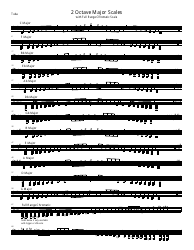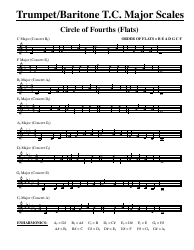Tuba One Octave Major Scales and Arpeggios Sheet
The Tuba One Octave Major Scales and Arpeggios Sheet is a document used by tuba players to practice and master their skills in playing major scales and arpeggios over one octave. It provides a structured guide for learning and improving technique on the instrument.
FAQ
Q: What is a Tuba?
A: A Tuba is a large brass instrument.
Q: What are one octave major scales?
A: One octave major scales are musical sequences of notes that ascend and descend within an octave.
Q: What are arpeggios?
A: Arpeggios are musical sequences of notes that are played one after the other, usually in a harmonic order.
Q: What is the purpose of practicing one octave major scales and arpeggios?
A: Practicing one octave major scales and arpeggios helps improve technique, finger dexterity, and familiarity with key signatures.
Q: Why are major scales important?
A: Major scales are important in music theory as they serve as a foundation for understanding key signatures and constructing chords.
Q: Does the Tuba use the same fingerings for major scales as other brass instruments?
A: Yes, the Tuba uses the same fingerings as other brass instruments for major scales.
Q: How can I improve my ability to play one octave major scales and arpeggios on the Tuba?
A: Regular practice, starting slow and gradually increasing speed, and focusing on accuracy are key to improving your ability to play one octave major scales and arpeggios on the Tuba.
Q: Is it necessary to learn one octave major scales and arpeggios on the Tuba?
A: Learning one octave major scales and arpeggios on the Tuba is not absolutely necessary, but it is highly beneficial for developing your overall musicianship and proficiency on the instrument.
Q: Can one octave major scales and arpeggios be used in musical performances?
A: Yes, one octave major scales and arpeggios can be used in musical performances as part of warm-ups, technical exercises, or as melodic elements in compositions.















